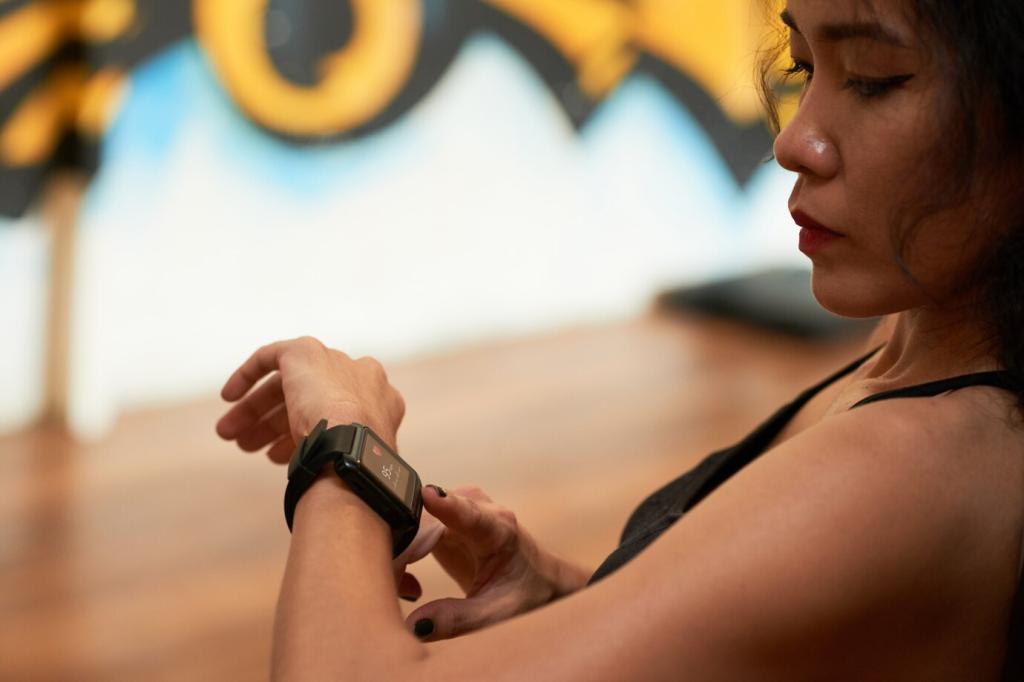
Smarter on Your Wrist: Integrating AI and Machine Learning in Wearable Apps
Chosen theme: Integrating AI and Machine Learning in Wearable Apps. Step into a future where sensors, models, and delightful micro-interactions turn raw signals into meaningful guidance. Join us, share your questions, and subscribe for practical insights and inspiring stories from the edge of the wrist.
Why AI Belongs in Wearables
01
From Metrics to Meaning
Step counts and heart rates are useful, but AI turns them into meaningful suggestions: rest days, smart workout intensities, and gentle nudges to breathe. Comment with the metric you most want decoded into action, and we’ll prioritize upcoming guides accordingly.
02
Personalization at Scale
Machine learning adapts to individual baselines, routines, and preferences, enabling guidance that feels handcrafted. Instead of generic thresholds, models learn your normal and flag what’s truly unusual. Share your experience with generic alerts and we’ll propose personalization strategies tailored to your use case.
03
Anecdote: The Morning Run That Changed a Roadmap
A beta runner ignored a generic fatigue warning until an AI-driven gait anomaly alert buzzed at kilometer two. The model compared today’s cadence variability with their personal trend, not a population chart. They slowed down, avoided a flare-up, and we redesigned alerts around individualized context.
Choosing the Right Model Footprint
Quantization, pruning, and knowledge distillation shrink models without crippling performance. Start with a baseline, then profile memory, inference time, and accuracy on real hardware. Tell us your target device and we’ll suggest a footprint strategy that preserves responsiveness and saves precious milliwatts.
Edge vs. Cloud Inference
Edge inference wins on latency, privacy, and offline reliability, while cloud shines for heavy models and fleet learning. Many teams blend both: quick on-device predictions, periodic cloud recalibration. What balance do you need? Comment with your use case and we’ll outline a hybrid plan.
Battery-Aware Scheduling
Intelligence should feel effortless, not thirsty. Schedule inference around motion windows, coalesce reads, and use duty cycling for sensors. We’ve seen apps extend daily life by deferring non-urgent tasks. Share your worst battery pain and we’ll craft a practical optimization checklist for you.
Data Design and Sensor Strategy
Accelerometer, gyroscope, PPG, and barometer streams can overwhelm unless engineered thoughtfully. Late fusion sometimes beats early fusion on-device, thanks to simpler pipelines and lower cost. Tell us which sensors you rely on, and we’ll propose a minimal fusion set that still elevates accuracy.

Designing Real-Time, Explainable Experiences
Designing Explainable Micro-Moments
Replace cryptic warnings with concise reasons: “Your cadence dropped 8% from your 7‑day baseline.” Add a learn-more link for deeper context. Which explanations resonate with your users? Comment with examples, and we’ll share patterns that balance clarity, brevity, and reassurance.
Haptics and Voice Without Overload
Short taps for urgent events, soft pulses for routine nudges. Pair haptics with glanceable cards or brief voice lines. Test in motion: walking, cycling, commuting. Tell us your haptic patterns, and we’ll critique them for distinctiveness, accessibility, and minimal cognitive load.
Fail Gracefully with Transparency
Models misfire. Admit uncertainty: show ranges, confidence scores, and simple recheck options. Offer a quick “dismiss and learn” flow so feedback improves future results. Share a failure scenario you fear, and we’ll propose transparent UX that turns errors into trust builders.
Privacy and Security by Design
Federated learning updates models without centralizing raw data. Combine secure aggregation with differential privacy to mask contributions. Interested in a starter pipeline? Comment with your stack, and we’ll map a pilot that respects users while continually learning from real behavior.
Privacy and Security by Design
Harden endpoints, sign models, and verify integrity at load. Use platform secure enclaves for keys and sensitive operations. We’ve seen attacks target both weights and feature buffers. Tell us your threat model and we’ll suggest layered defenses aligned to wearable constraints.




Testing, Metrics, and Continuous Improvement
Track latency, battery impact, false alarm burden, and user satisfaction alongside precision and recall. A slightly less accurate model that halves interruptions can win loyalty. What metric matters most to you? Share it, and we’ll show measurement setups that reveal trade-offs clearly.
Testing, Metrics, and Continuous Improvement
Run cohort tests by activity type, climate, and device generation. Shadow-mode new models before flipping defaults. Encourage opt-in feedback after notable events. Tell us where your field tests struggle, and we’ll propose cohort designs that surface edge cases before they become headlines.
